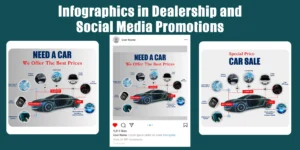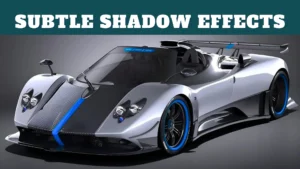Are you a fan of vintage cars? Do you love capturing their timeless beauty through the lens?
Welcome to the world of old car photography, where we blend nostalgia with the art of capturing moments
Join us as we embark on a journey to explore the mesmerizing world of vintage automobiles through the lens.
Are you interested in capturing the timeless beauty of old cars through photography? Discover the art of capturing the perfect shot with our expert tips. From finding the ideal location to understanding lighting techniques, we’ll guide you through the process of old car photography. Learn how to showcase the unique character and charm of vintage automobiles with our step-by-step guide.

Table of Contents
ToggleOld Car Photography: Capturing the Beauty of Classic Automobiles
Old car photography is a niche within the world of automotive photography that focuses on capturing the beauty, character, and history of classic automobiles. It involves highlighting the unique design elements, intricate details, and vintage charm of these old vehicles through the art of photography.
Whether you’re a vintage car enthusiast or a professional photographer looking to diversify your portfolio, old car photography offers a fascinating subject matter and endless creative opportunities.
Tips for capturing the essence of vintage cars
Photographing old cars requires a different approach compared to modern vehicles. To truly capture the essence of vintage cars, photographers must pay attention to detail and understand the unique characteristics of each vehicle. Here are some tips to help you bring out the best in your old car photography:
1. Research and understand the car’s history: Before you start photographing a vintage car, take the time to learn about its make, model, and historical significance. Understanding the car’s story will give you a deeper appreciation for its design and help you capture its true essence.
2. Choose the right location: Finding the perfect backdrop that complements the car’s era is crucial for creating impactful old car photographs. Look for settings that reflect the period, such as historic buildings, vintage gas stations, or scenic countryside roads.
3. Pay attention to details: Vintage cars are often known for their intricate details and unique features. Capture the sleek lines, chrome accents, and emblematic badges that define these classic automobiles. Get up close and personal to highlight these distinctive elements.
Essential equipment for old car photography
To master the art of old car photography, having the right equipment is essential. Here are some must-have tools for capturing stunning vintage car shots:
1. DSLR or Mirrorless Camera: Invest in a high-quality camera that allows you to shoot in manual mode and offers interchangeable lenses. This will give you more control over your shots and allow for better image quality.
2. Wide-angle lens: A wide-angle lens is crucial for capturing the entirety of the car and its surroundings. It allows you to showcase the car’s lines and proportions while capturing the environment in which it exists.
3. Tripod: Using a tripod helps ensure stability and sharpness in your images, especially in low-light situations or when you need longer exposures.
4. Circular Polarizer Filter: This filter helps reduce glare and unwanted reflections on the car’s surface, allowing for more vibrant and detailed images.
5. Remote Shutter Release: A remote shutter release eliminates the risk of camera shake when pressing the camera’s shutter button, resulting in sharper images.
Composition and framing tips for old car photography
Composition is key when it comes to old car photography. Here are some tips to help you create visually appealing and balanced compositions:
1. Rule of Thirds: The rule of thirds is a basic principle in photography composition. Imagine a grid of nine equal rectangles and position the car at one of the intersecting points. This helps create a visually pleasing composition and adds interest to the image.
2. Leading Lines: Utilize leading lines, such as roads, fences, or architectural elements, to guide the viewer’s eyes toward the vintage car. These lines add depth and a sense of direction to your composition.
3. Symmetry and Reflections: Vintage cars often have symmetrical designs that can be emphasized through reflections. Look for reflective surfaces like glass, chrome, or water to create captivating symmetrical compositions.
The importance of preserving automotive history through photography
Vintage cars are more than just vehicles; they are pieces of history that tell stories of a bygone era. Preserving automotive history through photography allows us to appreciate the craftsmanship and design of these vintage vehicles, ensuring that future generations can experience the charm and allure of the past. By capturing the beauty, elegance, and nostalgia that old cars evoke, photographers play a crucial role in documenting and immortalizing these automotive treasures.
1. Choosing the Right Location: Elevating the Aesthetics
Selecting the perfect location is crucial in old car photography. You want to find settings that complement the style and era of the vehicle. Historic downtowns, vintage gas stations, and scenic backdrops are often popular choices.
The environment should harmonize with the car and enhance its visual appeal. Consider incorporating elements like reflections, leading lines, and interesting textures to add depth and interest to your photographs.
When scouting for locations, keep an eye out for places that evoke a sense of nostalgia, such as abandoned buildings or classic roadside diners. These settings can transport viewers back in time and create a captivating narrative within your photographs. Remember to obtain appropriate permissions when shooting on private property or heritage sites.
2. Lighting: Emphasizing the Beauty of Classic Cars
Lighting plays a crucial role in any form of photography, and old car photography is no exception. The right lighting can bring out the textures, colors, and contours of a classic car, while poor lighting can make even the most stunning vehicle appear dull and lifeless.
Incorporate natural light whenever possible, as it tends to be softer and more flattering to the car’s features. Early morning or late afternoon hours, also known as the golden hours, offer warm and gentle lighting that can add a touch of magic to your images.
If you’re shooting in low-light conditions or indoors, consider using artificial lighting techniques, such as off-camera flash or softboxes, to create a more dynamic and professional look. Experiment with different lighting angles and intensities to highlight the car’s unique features and add drama to your shots. Remember to be mindful of reflective surfaces like chrome or glass, as they can produce unwanted glare if not properly managed.
3. Composition: Telling a Story Through Imagery
Composition is the art of arranging elements within a photograph to create a visually appealing and impactful image. In old car photography, composition is key to capturing the essence and personality of the vehicle. Pay attention to the placement of the car within the frame, using techniques like the rule of thirds or leading lines to guide the viewer’s eye and create a sense of balance and harmony.
Experiment with various angles and perspectives to showcase the car from different vantage points. Get down low to emphasize the car’s presence and capture unique details, or try shooting from above to showcase the entire vehicle in all its glory. Don’t be afraid to think outside the box and create unconventional compositions that highlight the car’s character and evoke a specific emotion or narrative.
4. Editing and post-processing techniques for vintage car photos
After capturing your vintage car photographs, the editing and post-processing stage allows you to enhance and refine your images. Here are some techniques to consider:
1. Adjust Exposure and Contrast: Fine-tune the exposure and contrast to bring out the details and enhance the overall mood of the image. Be careful not to overdo it and lose the natural look of the vintage car.
2. Color Correction: Vintage cars often have unique color palettes. Experiment with adjusting the colors to match the era and evoke a sense of nostalgia. Consider desaturating certain colors or applying vintage filters to create a timeless feel.
3. Remove Distractions: Clean up any distracting elements in the image, such as modern signage or people in the background. This helps maintain the focus on the vintage car and its historical context.
5. Showcasing Your Work: Building an Old Car Photography Portfolio
Once you’ve honed your skills in old car photography, it’s time to showcase your work and build a portfolio that captures the attention of vintage car enthusiasts, collectors, and potential clients. Create an online portfolio or a dedicated website to display your images in a visually enticing and user-friendly format. Include a variety of photographs that showcase different aspects of old car photography, such as close-ups of details, wide shots of the entire vehicle, and action shots that capture the car in motion.
Utilize social media platforms like Instagram, Facebook, and Flickr to share your work with a wider audience and connect with fellow old car enthusiasts and fellow photographers. Engage with the community by participating in car shows, exhibitions, and photography contests to gain recognition and exposure. Collaborate with vintage car owners or automotive magazines to have your work featured, and consider offering your services for events or editorial shoots to expand your network and establish your reputation in the industry.
Remember, old car photography is not just a skill; it’s a passion that allows you to combine your love for vintage cars and photography. Embrace the nostalgia, capture the beauty of classic automobiles, and let your creativity shine through your lens. With dedication, practice, and a keen eye for detail, you can master the art of old car photography and create captivating images that pay homage to the timeless allure of these automotive gems.
6. Showcasing your old car photography: online platforms and exhibitions
Once you have captured and edited your vintage car photographs, it’s time to showcase your work to the world. Here are some platforms and opportunities to consider:
1. Online Automotive Communities: Join online communities and forums dedicated to automotive enthusiasts. Share your work and engage with like-minded individuals who appreciate vintage cars.
2. Social Media: Utilize platforms like Instagram and Facebook to create an online portfolio and attract a wider audience. Use relevant hashtags to reach vintage car enthusiasts and potential clients.
3. Local Exhibitions and Car Shows: Participate in local exhibitions and car shows to display your work and connect with people who share your passion for automotive history. These events provide an opportunity to network and gain recognition in the vintage car community.
7. Resources for learning and improving your old car photography skills
To continuously improve your old car photography skills, here are some resources worth exploring:
1. Books and Magazines: There are numerous books and magazines dedicated to automotive photography. These resources provide inspiration, technical knowledge, and insights from experienced photographers.
2. Online Tutorials and Courses: Explore online tutorials and courses specifically tailored to old car photography. These resources offer step-by-step guidance, tips, and techniques to help you develop your skills.
3. Workshops and Mentorships: Consider attending workshops or seeking mentorship from experienced photographers specializing in automotive photography. Learning from professionals in a hands-on environment can accelerate your growth and understanding of the craft.
Key Takeaways: Old Car Photography
- Old car photography captures the beauty and nostalgia of vintage vehicles.
- Using natural light enhances the character and details of old cars in photographs.
- Experimenting with angles and perspectives can create unique and eye-catching shots.
- Editing techniques, such as adjusting colors and adding vintage filters, can enhance the vintage feel of old car photographs.
- Old car photography allows us to appreciate the enduring allure of classic automobiles and their stories.
- Editing and post-processing techniques for vintage car photos.
- Lighting: Emphasizing the Beauty of Classic Cars.
Frequently Asked Questions
Are you curious about the art of old car photography? Look no further! Here are some commonly asked questions and their answers to satisfy your curiosity.
1. How can I make old cars look more appealing in my photographs?
There are several techniques you can use to capture the charm of old cars in your photographs. Firstly, pay attention to your composition and framing. Use interesting angles and perspectives to highlight the unique features of the car.
Experiment with different lighting conditions to enhance the mood of the shot, whether it’s soft and diffused for a vintage feel or dramatic and contrasty for a bold look. Additionally, don’t shy away from incorporating the car’s surroundings to create a sense of context and storytelling in your images.
Finally, post-processing can go a long way in enhancing the appeal of old car photography. Use editing software to adjust the colors, contrast, and sharpness of the image, while still maintaining a natural and authentic look. Remember, the key is to capture the character and nostalgia of these vintage beauties.
2. What equipment is essential for old car photography?
Although having high-end gear can be helpful, you don’t need the most expensive equipment to start capturing stunning images of old cars. A digital camera, preferably with manual shooting modes, will give you more control over your shots. Look for a lens with a versatile focal length, such as a zoom lens or a prime lens in the range of 35mm to 85mm, to capture different perspectives and details.
Other essential equipment includes a sturdy tripod to keep your camera steady, especially if you’re shooting in low light or want to achieve long exposures. A polarizing filter can also be beneficial as it reduces glare and enhances colors. Lastly, invest in a good-quality lens cleaning kit and a comfortable camera bag to protect your gear during outdoor shoots.
3. How can I find old cars to photograph?
Locating old cars for photography purposes can be an exciting scavenger hunt. Start by researching local vintage car clubs or events in your area. These gatherings often attract car enthusiasts who are happy to showcase their prized possessions. Another option is to explore junkyards or salvage yards, which can be treasure troves filled with forgotten classics and vintage models.
When approaching car owners, it’s important to be respectful and ask for their permission before photographing their vehicles. Explain your interest in old car photography and how you plan to use the images. Many enthusiasts are thrilled to have their cars captured through the lens of a passionate photographer.
4. What are some creative ways to capture the personality of old cars?
Old cars have unique personalities, and capturing that essence in your photographs can make them truly stand out. One interesting technique is to focus on the car’s details, such as its emblem, grill, or interior accessories. These close-up shots can reveal the intricate craftsmanship and character of the vehicle.
Another creative approach is to incorporate people into your old car photography. Models dressed in vintage attire or individuals who reflect the era of the car can add a sense of narrative and nostalgia to your images. Additionally, experimenting with different shooting locations, whether it’s urban streets or serene countryside, can help evoke a specific mood and further enhance the car’s personality.
5. How can I improve my editing skills for old car photography?
Editing plays a crucial role in making your old car photos truly shine. One way to improve your editing skills is to study the works of professional photographers who specialize in automotive photography. Analyze their editing techniques, such as color grading and tonal adjustments, and try to replicate them in your own style.
Another valuable practice is to experiment with different editing software and plugins to find the tools that work best for you. Learn how to adjust colors, exposure, contrast, and sharpness to enhance the vintage vibe of your images. Don’t be afraid to push boundaries and experiment with filters, textures, and presets to give your photos a unique and eye-catching look. Learning from tutorials and online courses can also provide valuable insights and help you refine your editing skills.
15 Minutes of CLASSIC car photography
Summary
So, we learned that old car photography is a fun way to capture the beauty and history of vintage vehicles. By using the right techniques and equipment, like a DSLR camera and tripod, we can bring out the details and charm of these classic cars.
Lighting is crucial, so shooting during the “golden hour” or using a reflector can make a big difference. It’s also important to find interesting locations and angles to showcase the uniqueness of each car. And finally, editing software, like Photoshop, can help enhance the colors and give our photographs that vintage look. So grab your camera and start exploring the world of old car photography!
Conclusion: The power of old car photography in preserving automotive history
As photographers, we have the power to preserve automotive history and ensure that future generations can experience the charm and allure of vintage cars. By mastering the art of old car photography, we can capture the essence of these iconic vehicles, showcase their beauty and design, and immortalize their place in automotive history. So, grab your camera, embrace the nostalgia, and embark on a journey through time with the art of old car photography.
Disclaimer: The information and views expressed in this article are for informational purposes only and do not constitute professional advice. Always seek the advice of a qualified professional regarding any specific concerns or questions you may have.









